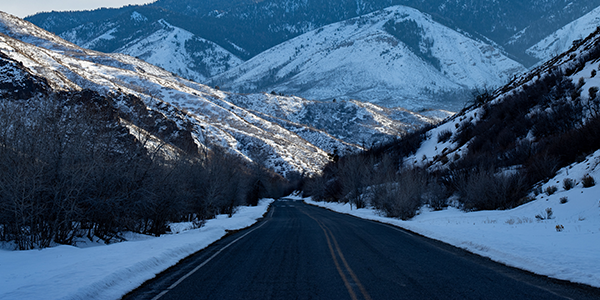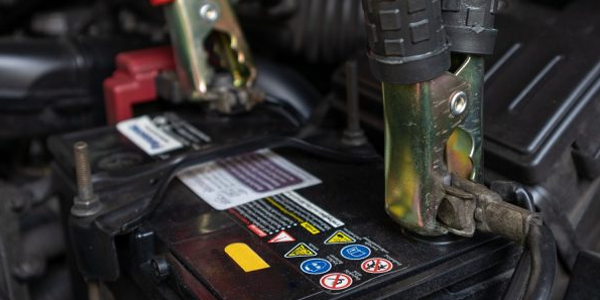July 2025
Winter Driving Tips
Winter is a time of extremes when it comes to New Zealand weather. It’s a time when problems or weaknesses in your vehicle can flare up but good vehicle preparation, knowledge and safe driving will help make sure you get to your destination.
Let's break it down to prevent break downs!
Before embarking on any winter journey, it is a good idea to prepare your vehicle for challenging conditions. Check out our handy tips to make sure you're ready to roll.
Is your vehicle approaching the time for its next scheduled service? If so, don’t put it off.
Book your vehicle in for a health check with your friendly MTA member. The experts know what to look for and by doing this you’ll have peace of mind in knowing that your vehicle is ready to face New Zealand's weather and road conditions.
Take care of your battery
Winter temperatures can cause your car battery to fail and not do its job properly, especially with additional loads such as heaters, lights and demisters. If your car is feeling sluggish in starting or you can see corrosion around the battery terminals, this could be a sign that the battery isn’t working as well as it should be!
To keep your battery and car running all year round, make sure your car is started and driven regularly. If possible, park in a garage and get battery tests done by your local MTA workshop. Keeping your battery fully charged will mean a longer lifespan and better performance. Here are a few tips on how to take care of your battery.
Tyres - get a grip
All the control you have is delivered through four palm-sized patches of rubber where the tyres meet the road.
Make sure your tyres are properly inflated. Over-inflation can reduce the gripping action of tyres because the tread will not meet the road surface as it was designed to do.
If the tread depth of your tyres is getting low, it may be worth having them replaced, even though they have more than the minimum tread depth of 1.5mm. If possible, tyres should be replaced before the tread depth drops to the minimum. There’s evidence that a 3mm deep tread can stop a vehicle on a wet road in a distance that’s 25 percent less than a tyre with 1.5mm deep tread.
Check the manufacturers wear indicator mark on your tyres to see if they need replacing. All tyres have tread wear indicators, which are small bars of rubber found between the tread blocks of the tyre. When the tread is worn flush with the tread wear indicators, the tyre has reached its wear limit and must be replaced as it no longer provides sufficient grip.
See Ice and snow for tyre information relating to snow.
Ice and snow
Bridges and overpasses ice over faster than normal roads. Why? The earth is warm and normal roads have the warmth of the earth underneath. Shady areas cool more quickly than areas in full sun. The shadows from large trees, buildings and mountains can cause isolated icy spots.
Black ice is often very difficult to detect, so be especially vigilant after very cold, settled nights.
If you are driving in icy conditions, reduce your speed and increase your following distance to avoid any sudden stops or hazards on the road. If you’re going to be driving in the snow, make sure you have the correct chains, snow socks and/or winter tyres (if fitted) – it’s now the law that when you use winter tyres, all tyres on the vehicle must be winter tyres. (These tyres are for those vehicles regularly driving in snow or icy conditions and when the temperature is below 7 degrees).
See clearly
Winter often means reduced visibility, so you need to allow additional time for every trip. Before you hit the road check your windscreen is clean and wipers are working properly. If your wiper blades are over 12 months old, we recommend you get them checked to avoid streaks.
Ensure you can see out of every window and mirror. Use a proper windscreen scraper or de-icer to remove ice from your vehicle. Remember to only pour lukewarm water over frost as hot water can cause a cracked windscreen.
The sun is low in the sky for most of winter so be prepared for sunstrike. Having clean windows helps and don’t forget your sunglasses or the car’s sun visors are handy if you’ve left your sunnies at home.
If you experience severe sunstrike you could pull over and wait for a few minutes until your eyes adjust or visibility improves. Be careful if snow has fallen and the sky is clear – sunlight shining on snow can cause ‘snow blindness’, which produces similar effects to sunstrike.
Your air-conditioning system is your friend. Many people only associate it with staying cool during the summer months, but it’s equally vital for ensuring good visibility during the colder months. Get your system checked, and allow it time to work properly. Clear a foggy windscreen by starting your demister with cold air, then gradually increase the temperature.
Look out for vulnerable road users like cyclists and runners – they may be especially hard to see along dimly lit roads.
And make sure people can see you too! Ensure your lights are all working properly and are correctly adjusted. Driving with lights on, day or night, can help with visibility. Remember to keep them dipped when travelling in foggy conditions; blasting them on to full only results in the light being reflected straight back at you, making visibility even harder.
Motorcyclists - this is for you
Before your next ride, it’s time for a safety reminder.
A thorough check of your bike’s brakes, tyres, lights, and your safety gear, as well as keeping your dream machine serviced and WoF’d is a good place to start.
Ride to the conditions and within your abilities. There’s no need to speed and remember to check the weather prior to any trip. This can help you prepare for, or avoid, dangerous roads conditions. If the weather isn’t looking good, maybe delay your ride for another day.
Because you and your bike can be missed by other road users (especially in bad weather), remember to ride with your lights on and give yourself plenty of room between other vehicles. Improve your visibility further by investing in bright-coloured protective gear.
Brake safely
If in winter conditions you get into the uneasy situation of a wheel-spin, ease back on the pedal immediately until you feel the tyres grip again. Apply the same principle when braking. Brake gently at first then increase the pedal pressure progressively.
Remember, don't steer if you are braking or accelerating and vice versa.
Avoid driving in heavy snow if you can – but if you have to, do it slowly. Avoid braking suddenly – brake gently and progressively rather than just stamping on the pedal. Climbing and descending hills in snow needs a lot of care and attention – climb hills in the highest possible gear. Reducing your engine's revs will maximise the chances of traction and minimise the chance of spinning your wheels. Similarly, descend hills very slowly, putting your vehicle in a low gear before starting the descent.
Don’t expect other drivers to be as well prepared – allow plenty of room between you and your fellow motorists. Give them even more when the weather is poor – double the two second rule and give yourself four seconds just in case you do have to come to a sudden stop. Find out more about keeping a safe following distance.
Things you might have with you
It makes sense to have a first aid kit and fire extinguisher in the car, but there are other things you should consider for the colder months too, not just tools for changing a tyre. A torch, a mat or cover to protect you from the ground should you need to change a tyre, a disposable raincoat or poncho and protective gloves are all helpful. A multi-tool or Swiss-army type knife can be handy too.
An emergency reflective triangle and a high visibility vest can be the difference between someone spotting you stranded on the side of the road and colliding with you.
Know what to expect
If you’re travelling out of town, make sure you know what you’re in for.
- Check for road closures and conditions using Waka Kotahi journey planner and local district council websites for advice: Pay attention to road condition updates provided by local authorities, transportation agencies, or electronic road signs. Adjust your travel plans if necessary.
- Example of a local district council road works and closures website: https://wellington.govt.nz/parking-roads-and-transport/roads/road-works
- Visit the MetService website for weather forecasts: Stay updated on weather conditions before your winter journey. Be prepared for potential hazards, such as snowstorms or black ice, and plan your route accordingly. If the weather is severe, you may have to take a break - wait until conditions have improved and you feel confident you can see the road and what’s ahead before continuing.



